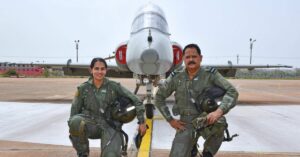Pushpaka Air Crash: An Eye Witness Account of PM Moraji Desai’s Miraculous Escape
Flt Lt PK Raveendran was amongst the crew scheduled to fly the then Prime Minister Morarji Desai from Delhi to Jorhat on November 4, 1977.
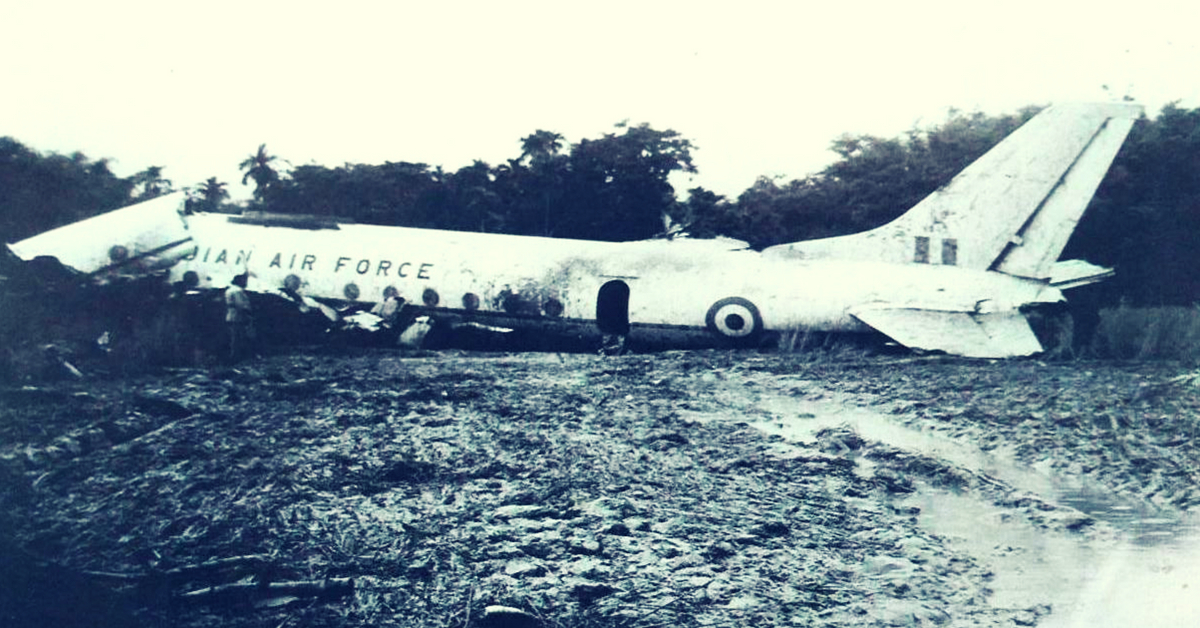
November 4, 1977. A typical day of flying operations at the Air Headquarters Communication Squadron in New Delhi, except that the officers were scheduled for a VIP flight on the Tupolev-124, the Russian-made aircraft which was christened as Pushpaka by the Indian Air Force.
The transport crew shortlisted for the particular flight included highly qualified and experienced pilots, navigators, flight engineers and flight signalers, who were scheduled to fly the then Prime Minister Morarji Desai from Delhi to Jorhat and return the same night.
Flt Lt PK Raveendran was amongst the crew comprising Wg Cdr Clarence Joseph D’lima (Captain), Sqn Ldr Mathew Cyriac (Co-pilot), Wg Cdr Joginder Singh (Navigator), Sqn Ldr VVS Sunkar (Flight Engineer), and Flt Lt OP Arora (Flight Signaller).
Raveendran was onboard as an under-trainee Flight Engineer and as it turned out, his error of not wearing the appropriate VIP flying overalls (the protocol uniform worn by IAF pilots while flying) that barred the young man from entering the cockpit, would end up saving his life.
Many probably remember the miraculous escape of PM Desai and his entire entourage in 1977 in an unfortunate air crash incident. This was the very same flight that was captained by D’lima and resulted in the death of all the members of the cockpit crew—except Raveendran and the ground crew.
So what exactly had happened on that ill-fated flight?

It had only been a few days since D’lima had humorously rebuked Raveendran for being improperly dressed as per protocol and keeping that in mind, he quietly took to the rear passenger compartment to occupy the last row, right window seat just ahead of the galley, from where he saw Sergeant Iyer, the flight steward preparing the galley for the flight.
It was an uneventful flight until the aircrew began their descent to the Jorhat airfield. The weather was quite cloudy which resulted in a bumpy journey throughout.
“The first sign of trouble came when I heard the pitch of the Soloviev D20-P Turbofan engines noise increasing, as Clairie sir opened power to initiate a ‘go-around’. I looked out the window to figure out what was happening, as I have never seen a Tu going around before, with a VIP on board! Soon, through the patches of low clouds, I could spot the Jorhat runway, quickly vanishing below the aircraft. As I came to know later, Clairie sir decided to do a ‘timed circuit’ to reposition the aircraft for a second approach,” narrates Wg Cdr (Retd.) Raveendran.
To understand what was going on and also to get a better view, he loosened his seatbelt, which was a big mistake in hindsight. Desperation over situational awareness seemed to get better of the young man, whose only sensory input was that of the pitch of engines as it had been well past local sunset time and pitch dark all around.
Amidst all the confusion, Raveendran saw the bright landing light on the right undercarriage bay wall through the starboard wing flap slots suddenly, which meant that the aircraft was due to touch down.
Instead, the Pushpaka hit the ground with a heavy thud, skidded some distance and came to a halt, with the right engine still blazing away!
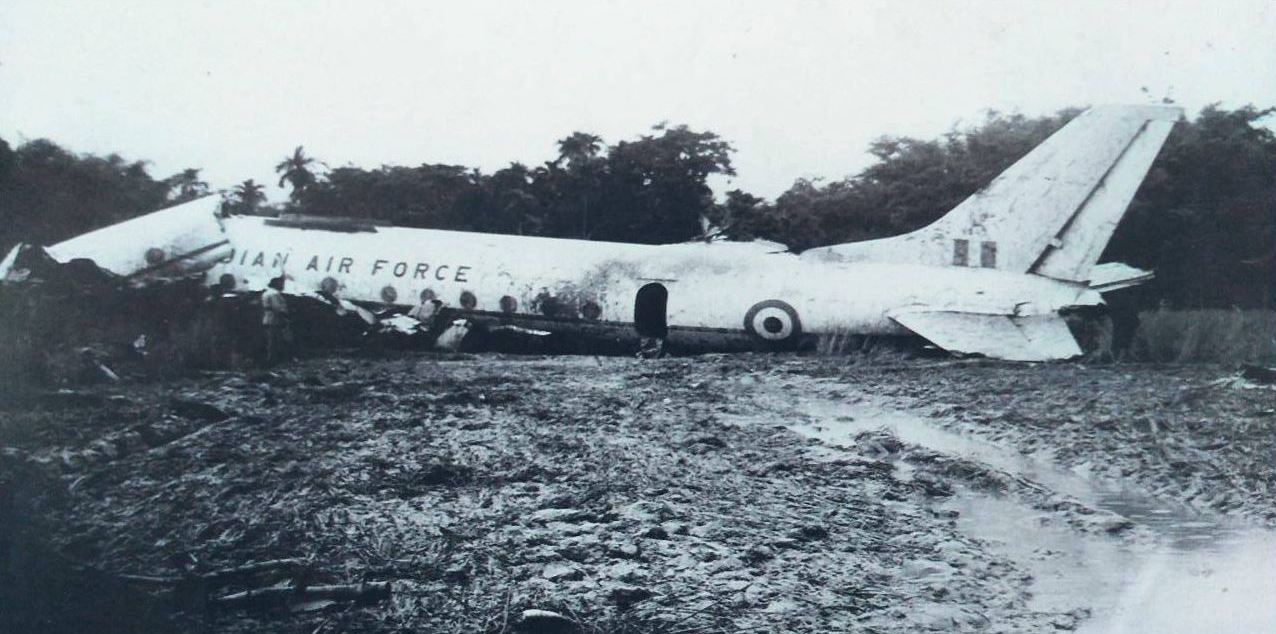
Immediately after the impact, the cabin lights had gone off.
Since Raveendran had loosened his seatbelt, he was thrown forward by the impact and ended up severely hurting his left knee. One could say it was the rush of adrenaline, but the man wasted no time and instinctively began shouting out ‘come out, come out through the rear exit’, which had been opened by Iyer.
In the hazy reflection of the right engine tailpipe blaze, Raveendran could see ghost-like figures trying to open their seat belts and clambering towards the rear door and together with Iyer, they helped the passengers exit the aircraft. At this time, the blaze from the right engine suddenly stopped, and it was all quiet and dark.
“As the last passenger was getting out, someone handed me a torch. In that feeble torchlight, I walked towards the cockpit. I could walk right up to the front luggage compartment ahead of VIP cabin. Beyond that, the nose portion appeared to be twisted and bent downwards with no access to the cockpit. I shouted the names of my fellow crewmembers one by one, hoping against hope that I would hear a response. I thought the entire crew might be trapped inside, unconscious; and I was consciously trying not to think of the worst,” Raveendran said.
At that point, Raveendran was yet to internalise the severity and intensity of the crash impact—most of the port wing was missing, and the root-mounted port engine got dislodged and was located later, far away from the crash site, he was told later.
After his futile attempt of finding the cockpit crew, he dejectedly walked all the way back and jumped out of the rear door to land on the slushy ground below.
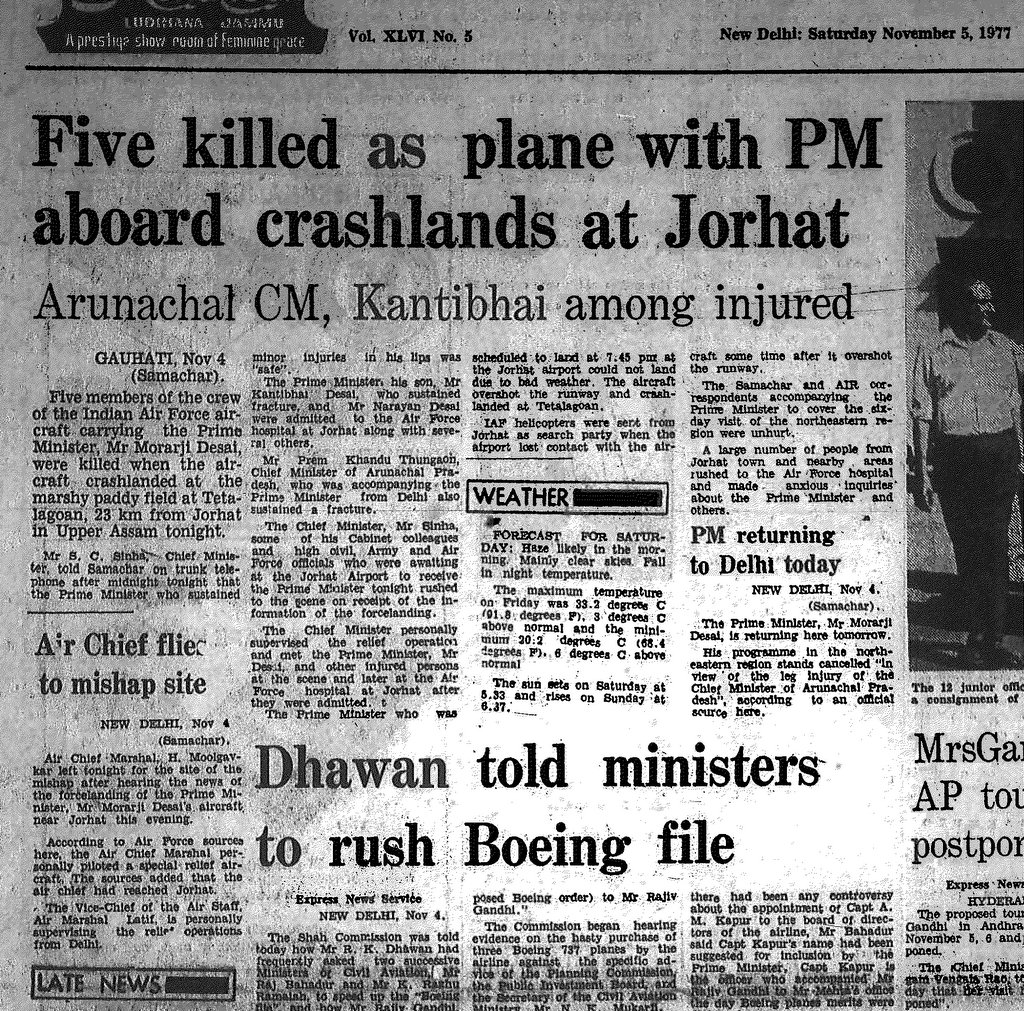
By then, the PM and his entourage comprising his son, Kanti Bhai Desai, John Lobo (Director of IB) and PK Thungon (Chief Minister of Arunachal Pradesh) had been safely escorted to the nearby village of Tekela Gaon by the ground crew. Only Raveendran and a couple of ground crew were left at the crash site, which had begun to reek of ATF (aviation turbine fuel) all around.
What followed next is a journey of a lifetime that the under-trainee flight engineer would never quite forget and had it not been for the benevolence of the people in a distant land, he would’ve probably not made it.
By then, villagers with burning country torches in their hands started heading towards the aircraft, which the last men standing, tried to prevent in order to avoid the possible risk of fire. For Raveendran, his only concern rested over the fate of the crew ‘trapped’ inside and they made one last attempt to gain access to the cockpit from outside but in vain.
Instead of worrying over his knee, which had begun to increasingly throb with pain, Raveendran and Cpl Upadhyay began requesting the villagers at the site for a commute to the Air Force station to get the rescue team to the crash site.
They were then guided to a nearby house that had a rickety jonga parked at the entrance. While the owner agreed to help, the jonga, unfortunately, refused to budge beyond the first 500 metres.
Then, one of the villagers mentioned that a schoolteacher who lived nearby had a bicycle. After waking up the man, Raveendran explained why he urgently needed to reach the station. The atmosphere was tense, and the language barrier only added to the confusion.
Meanwhile, Raveendran even offered to give all the money he had in his wallet as a security deposit for his cycle.

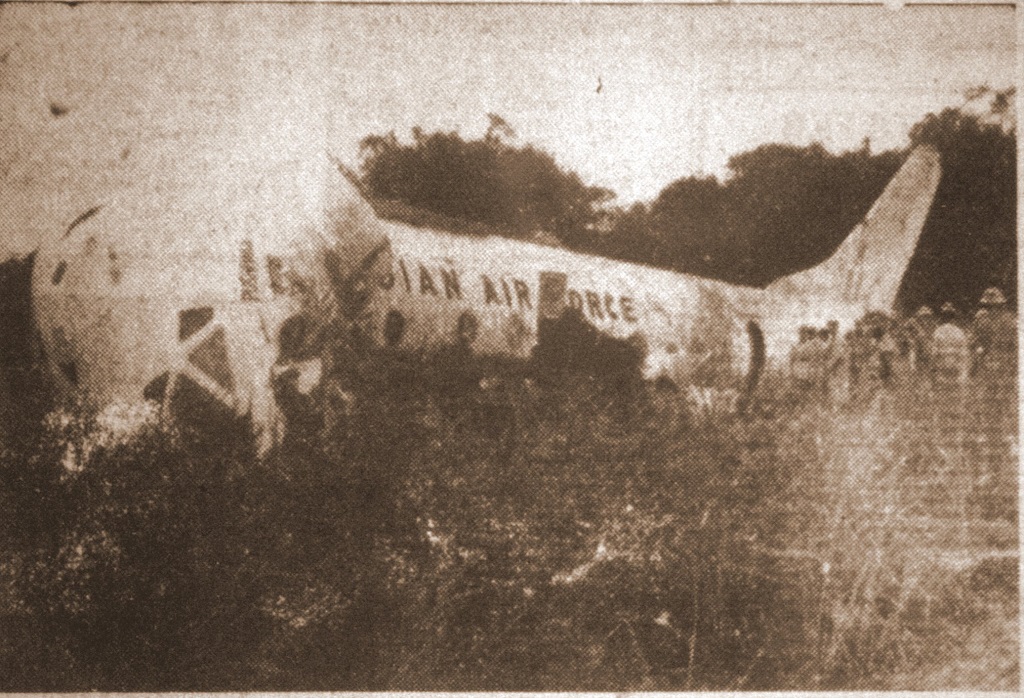
“The man and few villagers had another round of discussions in the language that was unintelligible to me and vanished only to reappear after a brief while with two bicycles. He refused to take any money and specified the arrangement. I could take one cycle, while two of his people would escort us to the Air Force Station on the other and bring back both. That was my first experience of the hospitality and helpful demeanour of the lovely people of the Northeast,” Raveendran said.
With Cpl Upadhyay on the rear carrier, he pedalled along slippery, muddy tracks with two of the villagers from Tekela Gaon. “Curiously, even though I was severe knee pain, later in the heat of the moment the awareness of the injury never crossed my mind!” he added.
After a painful ride, they finally hit a tarred road that would take them to the station. However, luck was on Raveendran’s side this time, as a group of English-speaking plantation workers were passing by on an open tempo vehicle and readily offered them a ride after comprehending their situation.
After profusely thanking the villagers and handing back the bicycle, the duo was transported to the station in a jiffy. What followed next could be briefly summed up as multiple narrations of the crash incident, dispatching search and rescue paraphernalia to the crash site, court of inquiry (CoI) investigations, and of course, medical attention for the crash victims.
Just as Raveendran had feared, none of the cockpit crew survived the crash, and while he initially believed that the bodies would be found inside the cockpit, the impact of the nose landing gear with a tree, ripped open the cockpit floor, through which the crew fell out, and their bodies were found scattered on the crash site.
It had indeed been a heartbreaking moment for the young engineer, who shed silent tears for his dear departed colleagues.

By the next morning, Raveendran’s left knee was terribly swollen, but that did not have a detrimental effect on his health, except for a medial collateral ligament rupture of the knee joint, which he regained within three months. Following the Court of Inquiry, both Raveendran and Upadhyay were recommended for Shaurya Chakra, military gallantry award and later awarded by the then President Neelam Sanjeeva Reddy on 26 Jan 1979.
While newspapers had reported the miraculous escape of the PM and his staff with much publicity, the loss of the aircrew faded away without much hue and cry, except within the peripheries of the IAF, nor did Raveendran’s story come to the fore until he penned down the entire episode on the online military portal, Bharat Rakshak, earlier this year.
Interestingly, Raveendran, now retired, never got a chance to visit Jorhat or in particular the village of Tekela Gaon, despite being posted in the Northeast a couple times while he was in the IAF.
However, he decided to revisit the village on November 4, last year, exactly four decades after the ill-fated Tu-124, Pushpaka’s crash incident and he was accompanied by some of his ex-defence and civilian friends in the endeavour.
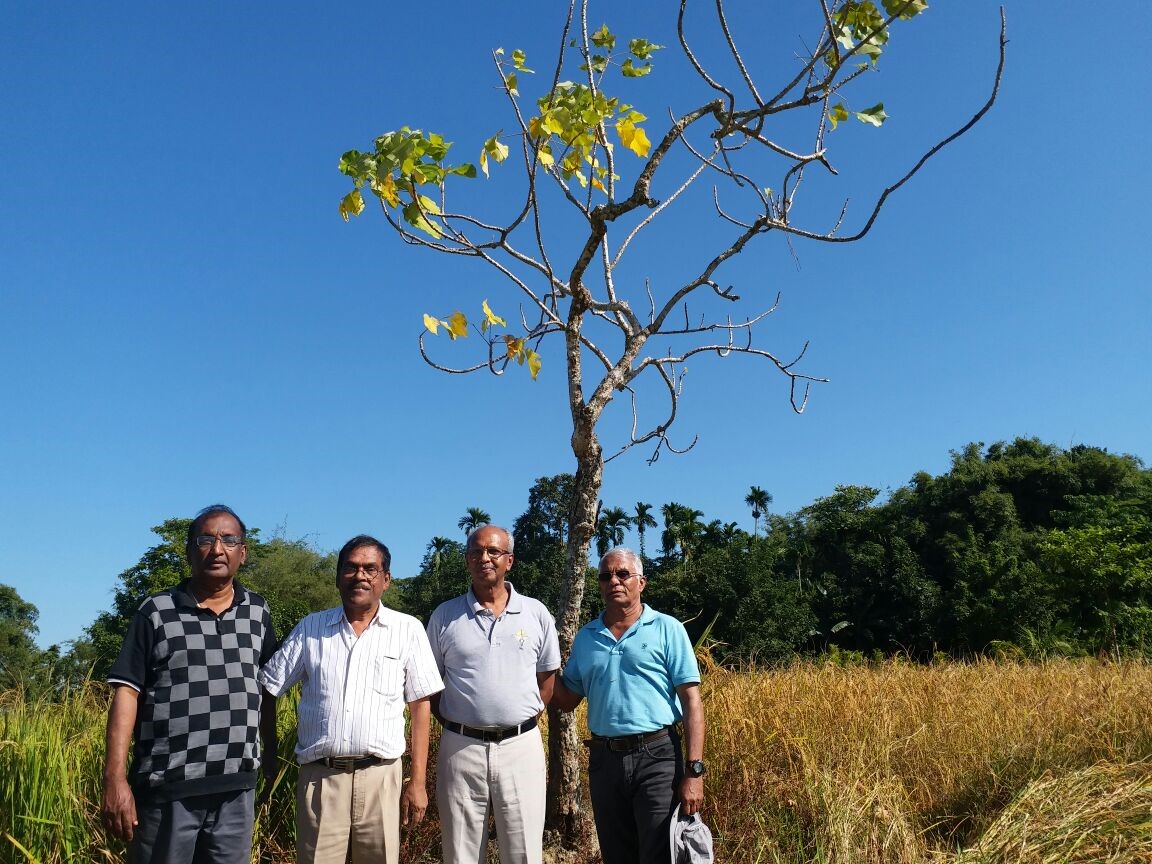
“I was under the impression that no one would remember such an old incident and was apprehensive of locating the crash site in Tekela Gaon. Therefore, I had contacted the local Air Force authorities as well as the district administration for any help that we may need. Both were very helpful and forthcoming. Escorted by two airmen from the Air Force station, who had conducted a recce as a prelude to our visit, it was quite easy to reach the accident site,” he said.
Contrary to Raveendran’s assumption, the news of one of the survivors of the ‘Morarji Desai crash’ spread like wildfire and he realised that while the rest of the country had forgotten about the incident, the people of the village, both young and old seemed to have forever engraved it in their consciousness and had stories of their own to recount.
However, meeting Bitopan Borah was something that Raveendran would have never imagined—Borah was the son of Tarun Chutia, the same man the poor officer had woke up on that fateful night for the aborted Jonga ride from the crash site. After hearing the news of Raveendran’s visit, the young man had been desperately trying to contact him.
“We had planned our return trip to Guwahati by train from Mariani next day evening and accordingly agreed to meet up there. When we reached Mariani, we were taken aback by the presence of a fairly big contingent of visual as well as print media personnel,” Raveendran mentioned.
Post the air crash incident, Borah had been trying to follow up on the promises for the betterment of Tekela Gaon, apparently made by the VIP passengers of that ill-fated flight.

With his persistence and self-motivated efforts, the crash site in Takela Gaon once again saw a Tu-124, Pushpaka amidst its front in January this year—except this was made of bamboo and hay and had been part of Magh Bihu celebrations, involving the district administration, Air Force authorities and local politicians.
All the inputs, quotes and photographs have been sourced from the Bharat Rakshak portal. You can read Wg Cdr (Retd) PK Raveendran’s entire story here.
(Edited by Gayatri Mishra)
Like this story? Or have something to share?
Write to us: [email protected]
Connect with us on Facebook and Twitter.
NEW: Click here to get positive news on WhatsApp!
If you found our stories insightful, informative, or even just enjoyable, we invite you to consider making a voluntary payment to support the work we do at The Better India. Your contribution helps us continue producing quality content that educates, inspires, and drives positive change.
Choose one of the payment options below for your contribution-
By paying for the stories you value, you directly contribute to sustaining our efforts focused on making a difference in the world. Together, let's ensure that impactful stories continue to be told and shared, enriching lives and communities alike.
Thank you for your support. Here are some frequently asked questions you might find helpful to know why you are contributing?


This story made me
-
97
-
121
-
89
-
167




